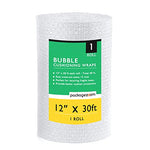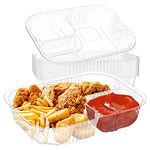You have no items in your shopping cart.
Discover the Benefits of Go Green Recycling and Learn How to Make a Positive Impact on the Environment
In today's world, where environmental concerns are at the forefront of global discussions, it is essential to adopt sustainable practices that promote a greener future. One such practice gaining momentum is Go Green Recycling. This comprehensive approach to waste management not only minimizes the harmful effects of waste on the environment but also helps conserve natural resources. In this article, we will delve into the concept of Go Green Recycling, explore its benefits, and provide practical tips on how you can actively contribute to this sustainable movement.
Go Green Recycling: What is it?
Go Green Recycling refers to the process of reusing, recovering, and repurposing waste materials to minimize their impact on the environment. It involves sorting and separating different types of waste and sending them for recycling, ensuring that valuable resources are not wasted. By recycling materials like paper, plastic, glass, and metal, we can reduce the amount of waste that ends up in landfills and conserve valuable natural resources.
The Importance of Go Green Recycling
1. Environmental Conservation
Go Green Recycling plays a crucial role in protecting the environment by reducing pollution and conserving resources. When waste is sent to landfills, it decomposes and releases harmful gases, such as methane, which contribute to climate change. By recycling, we can significantly decrease the amount of waste that decomposes in landfills, thereby reducing greenhouse gas emissions.
2. Conservation of Natural Resources
Recycling helps conserve valuable natural resources like timber, water, and minerals. For example, recycling paper not only saves trees but also reduces the amount of water and energy required for the production process. By opting for Go Green Recycling, we can minimize our reliance on virgin materials and contribute to the preservation of our planet's resources.
3. Energy Savings
The recycling process consumes significantly less energy compared to the production of new materials from raw resources. For instance, recycling aluminum requires only 5% of the energy needed to extract and refine new aluminum ore. By recycling, we can conserve energy and reduce our carbon footprint.
4. Reduction of Landfill Waste
One of the significant advantages of Go Green Recycling is the reduction of waste sent to landfills. Landfills not only occupy vast amounts of land but also pose a threat to the environment. When waste materials decompose in landfills, they can contaminate soil and water sources, leading to adverse ecological consequences. By recycling, we can minimize the amount of waste destined for landfills, contributing to a cleaner and healthier environment.
5. Creation of Job Opportunities
The recycling industry creates a significant number of jobs. As the demand for recycled materials increases, more recycling centers and facilities are being established, leading to job creation in waste management, recycling collection, and sorting. By supporting Go Green Recycling initiatives, we can contribute to the growth of a sustainable job market.
How to Implement Go Green Recycling in Your Daily Life
Now that we understand the importance of Go Green Recycling, let's explore some practical ways to incorporate it into our daily lives:
1. Start with Proper Waste Segregation
The first step towards effective Go Green Recycling is to sort and separate waste correctly. Create separate bins for different types of materials, such as paper, plastic, glass, and metal. Ensure that the recyclables are clean and free from any contaminants. By segregating waste at its source, you lay the foundation for an efficient recycling process.
2. Educate Yourself and Others
Stay informed about local recycling guidelines and educate yourself about what can and cannot be recycled in your area. Share this knowledge with friends, family, and colleagues to promote responsible recycling practices. The more people are aware of the importance of Go Green Recycling, the more significant impact we can make collectively.
3. Reduce and Reuse
Before recycling, consider ways to reduce waste generation. Opt for products with minimal packaging or reusable alternatives. For example, carry a reusable water bottle or coffee cup instead of using disposable ones. By reducing and reusing, we can minimize the amount of waste that needs to be recycled.
4. Support Recycling Programs and Initiatives
Support local recycling programs and initiatives in your community. Find out if your area has a curbside recycling program or drop-off centers where you can dispose of recyclables conveniently. Participate in community clean-up drives and encourage others to do the same. By actively engaging in recycling initiatives, you contribute to the growth of sustainable practices in your locality.
5. Purchase Recycled Products
When shopping, choose products made from recycled materials. Look for labels or certifications that indicate the product's recycled content. By purchasing recycled products, you create a demand for recycling and help close the recycling loop.
FAQs about Go Green Recycling
-
Q: What materials can be recycled through Go Green Recycling? A: Go Green Recycling encompasses a wide range of materials, including paper, plastic, glass, metal, and electronic waste. Each material has specific recycling processes that maximize resource recovery.
-
Q: Is recycling more beneficial than throwing waste in landfills? A: Absolutely! Recycling reduces environmental pollution, conserves natural resources, and saves energy. Sending waste to landfills, on the other hand, contributes to greenhouse gas emissions and depletes valuable resources.
-
Q: Can contaminated materials be recycled? A: Contaminated materials can hamper the recycling process and lower the quality of recycled products. It is crucial to ensure that recyclables are clean and free from contaminants to maintain the effectiveness of the recycling process.
-
Q: How can businesses promote Go Green Recycling? A: Businesses can implement recycling programs within their premises, educate employees about recycling practices, and invest in eco-friendly packaging and waste management solutions. Collaborating with recycling partners and supporting local recycling initiatives are also effective ways to promote Go Green Recycling.
-
Q: What happens to recycled materials after collection? A: After collection, recycled materials are sent to recycling centers, where they undergo sorting, processing, and transformation into new products. These products may include recycled paper, plastic containers, aluminum cans, and more.
-
Q: Can I make money from recycling? A: Yes, recycling can be financially rewarding. Some recycling programs offer incentives or refunds for certain recyclable materials. Additionally, you can consider selling recyclable materials directly to recycling companies or participating in buy-back programs.
Conclusion
Go Green Recycling is not just a passing trend but a crucial step towards a sustainable future. By adopting responsible recycling practices in our daily lives, we can minimize waste, conserve natural resources, and reduce our impact on the environment. The benefits of Go Green Recycling extend beyond individual efforts; they contribute to a collective movement towards a cleaner and healthier planet. Embrace the power of recycling today and join the Go Green Recycling revolution.








